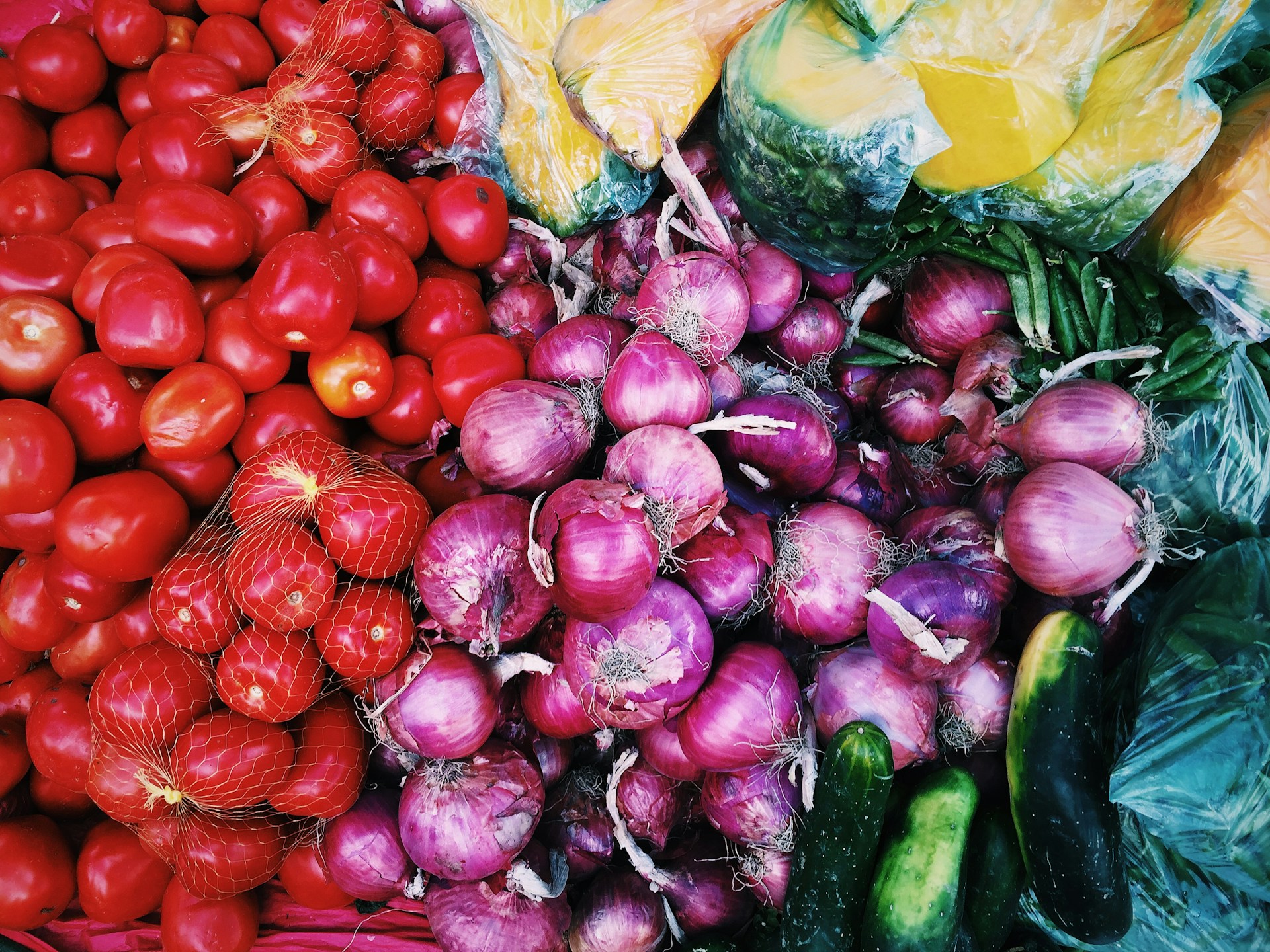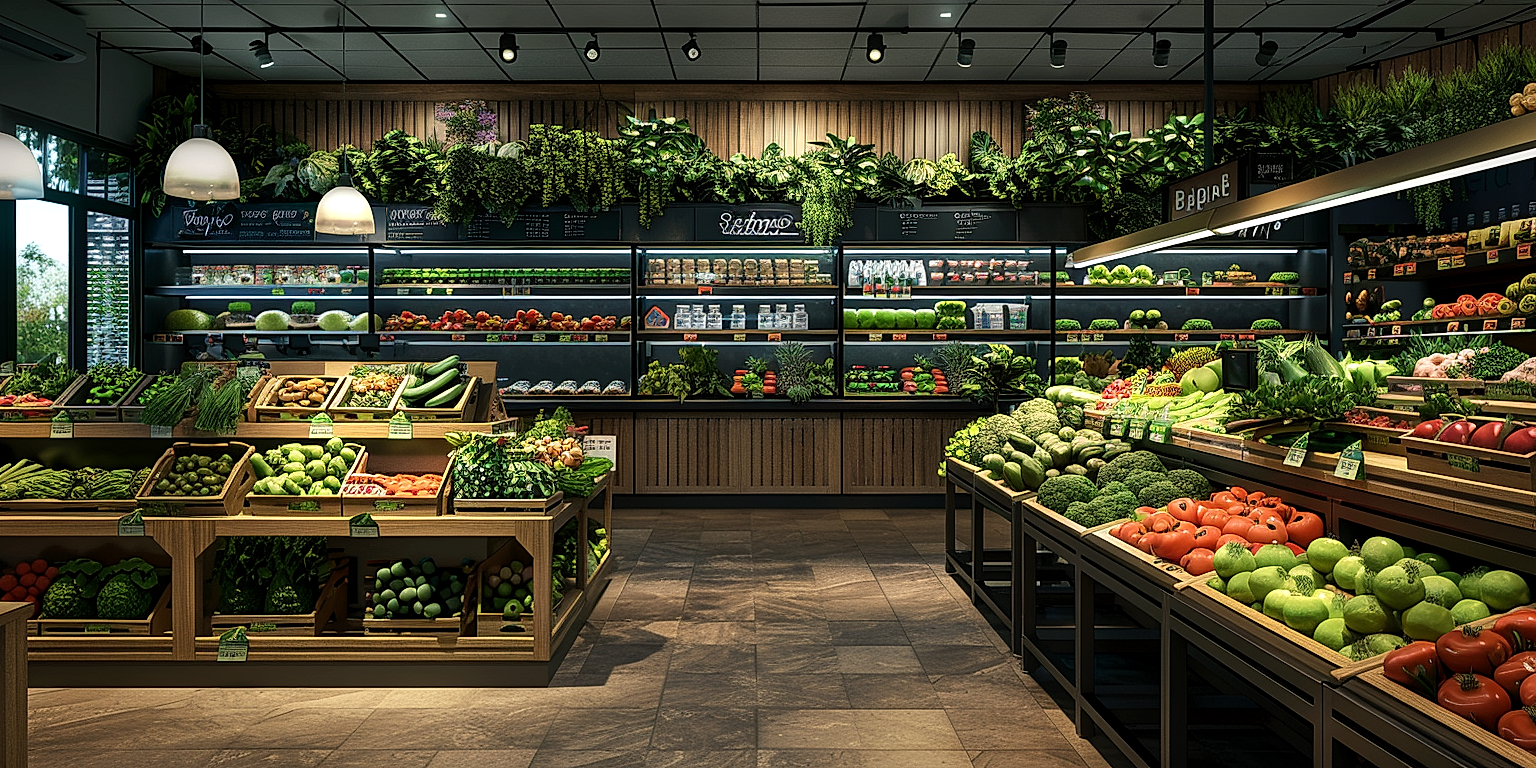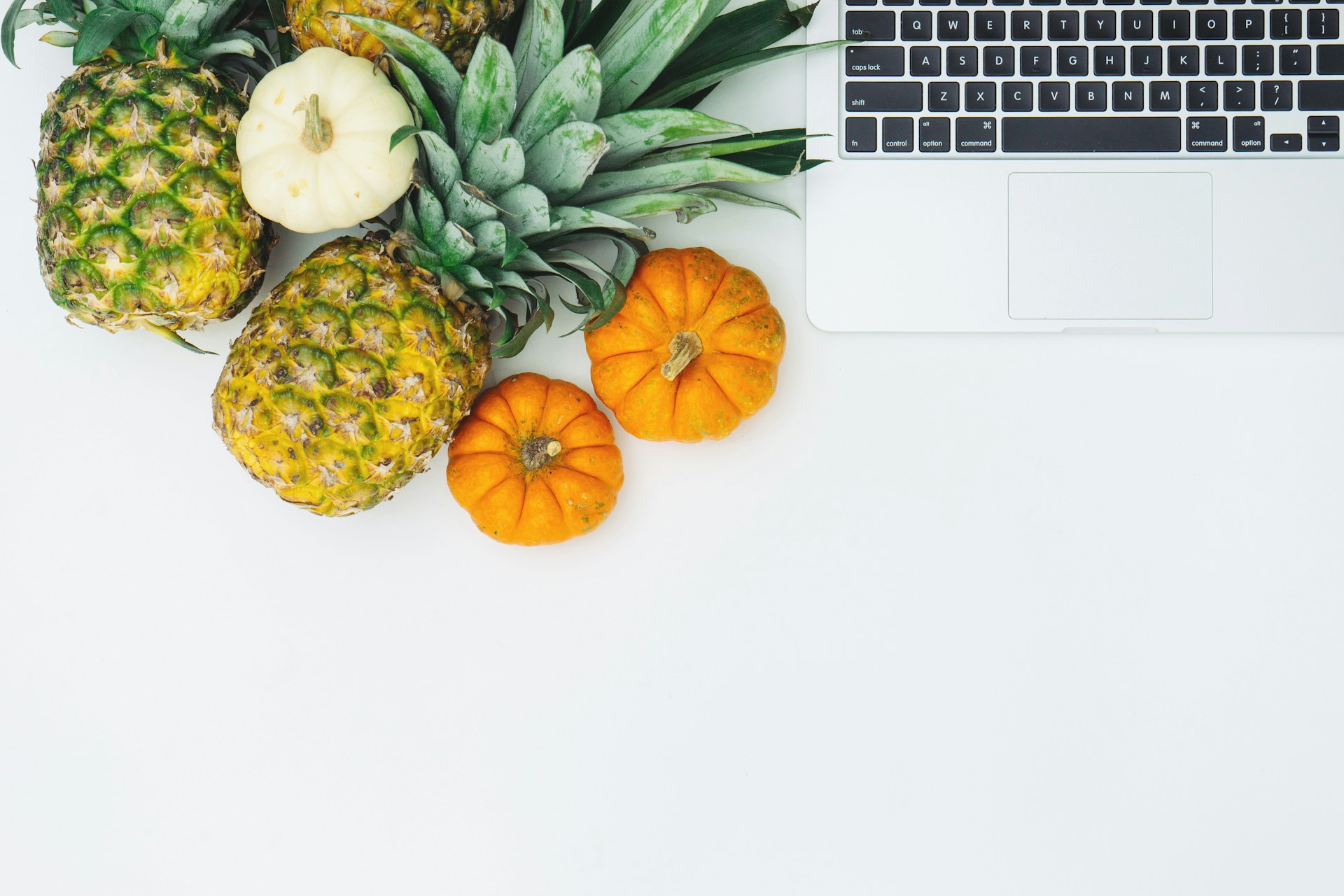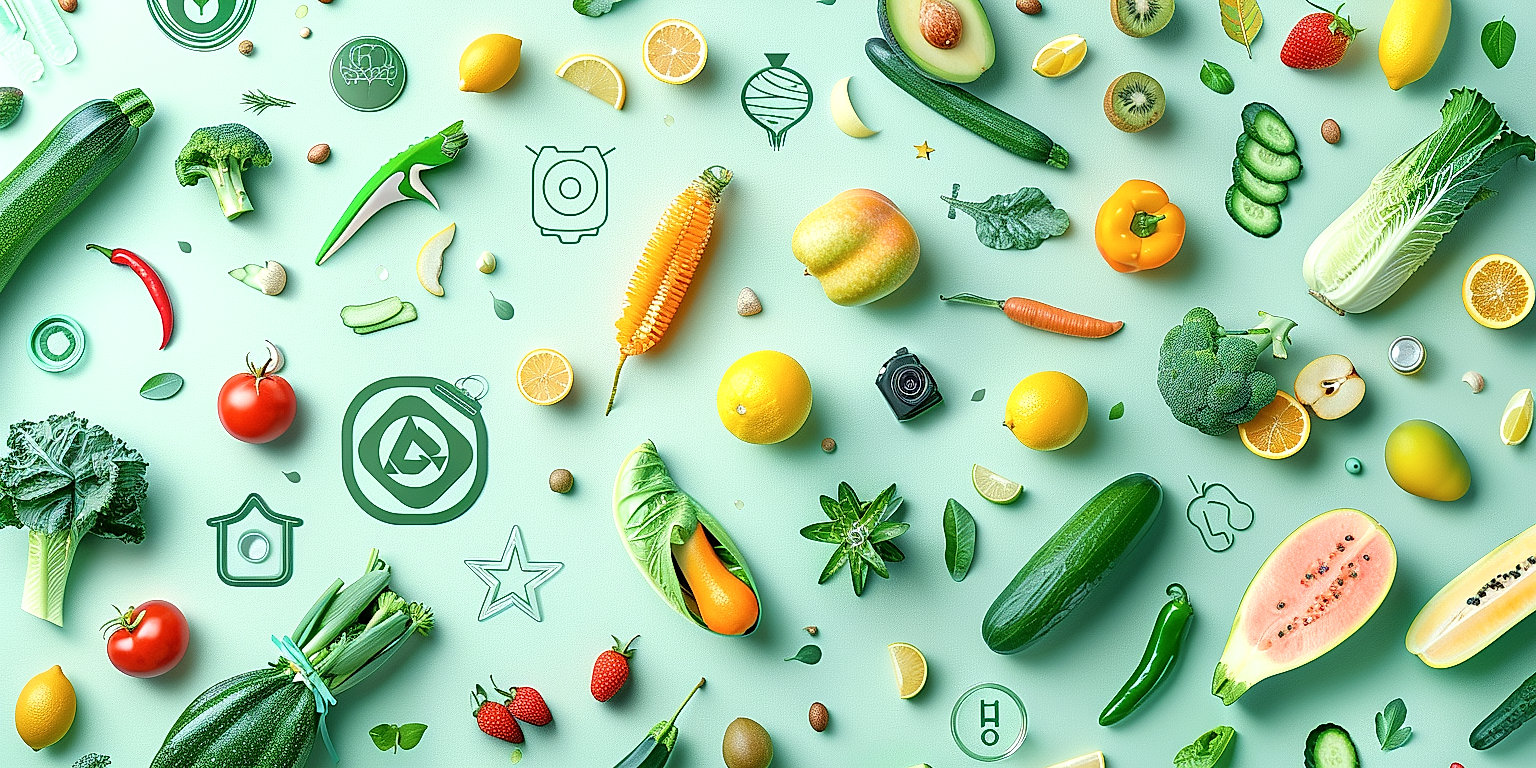In the competitive landscape of produce retailing, impactful visual branding is key.
It sets successful brands apart and offers them a strategic edge.
The power of thoughtful packaging design cannot be underestimated.
It’s not just about aesthetics, but also about functionality, sustainability, and effectively communicating the brand’s identity.
This discourse aims to equip you with valuable insights and practical strategies.
It will enhance your understanding of how effective packaging can drive both brand recognition and consumer choices.
Contents
- Packaging Design Tips For Produce Retail Branding
- 1. Prioritize clear, readable branding and product information.
- 2. Utilize Contrasting Colors for Visibility and Appeal
- 3. Highlight key product features and benefits
- 4. Ensure packaging quality reflects product quality
- 5. Incorporate eco-friendly packaging materials
- 6. Use strategic package shape for product protection.
- 7. Create a Unique, Memorable, Repeat-Purchase Design
- The Bottom Line
Packaging Design Tips For Produce Retail Branding
1. Prioritize clear, readable branding and product information.
Successful branding in produce retail starts with prioritizing clear, readable information on your packaging.
This refers not only to the brand name itself but also includes pertinent details about the produce, like its origin, nutritional information, and any other notable features.
Customers have numerous options when shopping, and they’re more likely to trust and choose products that clearly communicate what they offer.
This strategy of open information sharing promotes credibility and trustworthiness, which are critical in influencing consumer purchasing decisions.
Your packaging is the first point of contact between your produce and potential customers; make sure it speaks clearly and confidently about your product.
Fine-tuning the readability of your branding doesn’t only hinge on font choice or size—it’s also about how you position and group text elements on your packaging.
Critical information should be front and center, while other details can be situated in less prominent areas, but still maintain visibility.
It’s also important to use contrasting colors and legible font styles to enhance readability.
Visual hierarchy can be employed to guide customers’ eyes towards the most important information about your product.
Remember, the goal is not to overwhelm shoppers with information but to provide them with just enough details to make informed decisions.
Following regulatory guidelines for branding and labeling is also crucial.
Not abiding by these rules can cause recalls, penalties, and can tarnish your brand image.
So, make sure all essential information such as expiry dates, storage instructions and allergens, are correctly and clearly stated on your packaging.
Last, but not least, don’t compromise on clarity for the sake of aesthetics.
Gorgeous packaging that fails to inform will only leave shoppers confused and likely to choose a competitor’s product over yours.
Remember, packaging is your product’s silent salesman—it needs to clearly articulate why a customer should pick it over the rest.
Thus, readable branding and product information should be a top priority when developing your packaging design.
2. Utilize Contrasting Colors for Visibility and Appeal
Product visibility plays a crucial role in attracting customers in a retail environment, that’s why in your packaging design, using contrasting colors can be significantly beneficial.
A carefully selected combination of colors can highlight your product amidst a sea of competitors in a retail environment.
Contrasting colors work really well when used intelligently as they can catch the eye and create a lasting impression.
This can be particularly beneficial for your product as it helps in grabbing attention and encouraging potential buyers to pick up the product for a closer look.
It’s important to note that the colors you choose should align with your brand identity and the message you wish to communicate.
A well executed color contrast in your packaging design can do more than just make your product stand out, it can invigorate your brand and its perception among consumers.
Your colors should also represent the kind of product that you are selling.
For instance, if you’re selling fresh produce, greens and vibrant colors may be used to communicate the freshness and the organic nature of the products.
Conversely, if you are selling gourmet candies, dark and rich colors may be used to indicate the indulgence and decadence of your products.
But, color is not just about visibility, it can also impact how consumers perceive your product and influence their purchasing decisions.
Colors can evoke feelings, moods, and even prompt reactions.
Understanding color psychology could help drive your choices and use colors that could evoke specific responses from your target customers.
Colors can affect how consumers evaluate products and make products more memorable than their monochrome counterparts.
The use of contrasting colors, therefore, not just makes your product stand out on the shelf, but also helps reinforce your brand identity, product positioning and how your product is perceived in the market.
Finally, remember to be consistent with your color usage because consistency can help consumers identify your brand easily in their future shopping trips.
3. Highlight key product features and benefits
When it comes to packaging design for produce retail branding, it is critical to highlight the key product features and benefits.
Consumers are often driven by the understanding of what the product can offer them. Therefore, clearly showcasing key features and benefits on the packaging can significantly impact purchasing decisions.
Whether the focus is on the uniqueness of the product, its health benefits or its convenience, how this information is conveyed plays an important role in brand perception.
Effective communication through packaging can turn a one-time buyer into a loyal customer.
Start by identifying the product’s unique selling points (USPs). What sets your product apart from the competition? These are the key features you need to emphasize.
Once you’ve identified your USPs, the next step is communicating them effectively on your packaging.
This may require careful consideration of color choices, fonts, imagery, and placement. The objective is to ensure that the information stands out, is easily understood, and resonates with the target audience.
Furthermore, in produce retail branding, packaging should ideally communicate any health benefits associated with consuming these foods. These benefits can significantly influence consumers’ purchasing decisions.
If possible, also include any positive environmental aspects of the product on the packaging. For instance, if it was grown organically or is locally sourced, it’s worth mentioning these factors.
Remember, the information on your packaging should not just be limited to the ingredients or nutrients listings. It should creatively incorporate the story of the product to engage consumers and aid their decision-making process.
Lastly, while key features and benefits are essential, they should be balanced with an aesthetically pleasing design. An overly cluttered design could potentially create confusion, leading to loss of sales.
It’s about finding a balance between providing necessary information and keeping the design clean and eye-catching. After all, you want your product to be the one that stands out on the shelf.
Effective packaging design is truly a blend of the right communication, enticing visuals, and a clear understanding of your product’s advantages. By highlighting key product features and benefits on your produce packaging, you can greatly enhance your brand’s chances of success in the retail environment.
4. Ensure packaging quality reflects product quality
An integral aspect of product branding is ensuring that the quality of your packaging reflects the quality of your product. Packaging too can convey a strong impression about your product to customers, often serving as the differentiating factor amid a sea of similar goods.
Poor quality packaging might not only contribute to product damage but also might lead potential customers to make negative assumptions about your product quality. Hence, paying attention to the packaging quality is crucial.
Your packaging, in simple terms, is the first impression of your physical product that a consumer has. So, if the packaging is shoddy or cheap, the customer might assume the same about your product.
The perception of your product quality and value is significantly influenced by the packaging quality.
You can opt for high-quality printing methods, use top-grade materials, or even consider engaging a professional packaging design company who can ensure that your packaging quality does not fall short of your product quality.
If the product quality is premium, don’t skimp on the packaging. Use materials that feel good to touch, print designs that stand out, and incorporate touches like foil stamping or embossing. The extra effort and cost will definitely pay off in enhancing the perceived value of your product.
When designing packaging for produce retail branding, remember that the customer would probably be able to see the actual product. Your packaging should enhance, instead of overshadowing the product.
Further, in the context of produce retail, besides pleasing aesthetics, easy functionality and package durability should be kept in mind. Your packaging should keep the fruits or vegetables fresh, intact, and easy to carry. Consumers should feel that they’re purchasing a quality product that’s worth its value.
In case your product requires packaging that can withstand refrigeration or other special handling, ensure you reflect on these prerequisites in your packaging design.
A continued effort to maintain and enhance packaging is also essential for branding consistency. Don’t risk product quality or dilute your brand value by changing a high-quality packaging setup for cheaper alternatives.
Lastly, communicating the product quality few words or symbols on the packaging itself can also be instrumental. For instance, words like ‘premium’, ‘all-natural’, or ‘hand-picked’, or symbols of quality and sustainability can add a boost to consumer perceptions.
It takes a bit of balancing and lots of trials to find the right packaging design and materials. But once you do, it will consistently enhance the perception of your product and brand.
Remember, you never get a second chance to make a first impression. So, design your packaging such that it expresses quality, even before your consumer gets to use the actual product.
5. Incorporate eco-friendly packaging materials
One essential aspect of a packaging design for produce retail branding is the incorporation of eco-friendly materials.
Sustainability is a growing concern among consumers, and your brand must demonstrate its commitment to environmental stewardship.
Going green with your packaging is not just responsible; it can also increase your product’s appeal to the environmentally conscious market segment.
Packaging materials such as cardboard, organic fabric, and biodegradable plastics have less impact on the environment.
Choosing these materials indicates that your brand is not only focused on delivering quality products but is also actively participating in environmental conservation efforts.
Many consumers specifically look for products with eco-friendly packaging as a way to reduce their personal ecological footprint.
It is a feature that can significantly influence the choice of a discerning shopper, and can therefore make your product stand out in a crowded marketplace.
Sustainable packaging can also reduce waste in the long run.
As the materials are recyclable or compostable, they contribute to the circular economy and can save significant amounts of landfill space.
Moreover, making the switch to environmentally friendly packaging materials may not be as cost-prohibitive as you might think.
Many suppliers are increasingly offering affordable, sustainable options as they recognize the growing demand from businesses.
Your brand may even save money in the long-term with lighter, less bulky packaging that is cheaper to transport.
It is ultimately a win-win situation: your brand benefits from positive customer perceptions and potential cost savings, while also contributing to a healthier planet.
Remember, the decision to use eco-friendly packaging materials is not just a design choice but a reflection of your brand’s values and ethos.”
Incorporating eco-friendly packaging materials in produce retail branding can therefore be a highly effective branding strategy.
6. Use strategic package shape for product protection.
Coming to the essential aspect of packaging, which is to secure the products it houses, we delve into the importance of strategic package design.
Adequate packaging shape not only enhances aesthetics but also plays an essential role in product protection.
It is a given that the design and shape of the product packaging can drastically influence the degree of protection it provides.
While envisioning the ideal package shape, remember that your primary aim is to prevent the produce inside from getting damaged during transit and storage.
Mostly, the shape and the size of the produce determine the best-suited package design.
For instance, soft fruits like peaches or nectarines demand more protection compared to sturdy vegetables like potatoes or pumpkins.
Therefore, their packaging plans need to be strategized differently, keeping their nature and fragility in mind.
In this context, understanding the characteristics of the type of product in question can facilitate impressive product protection.
The design plan should also incorporate features that aid in stackability and sturdiness while being transported or displayed in stores.
Moreover, well-thought packaging design provides ease of product handling to both vendors and consumers.
Cost-efficacy should not trump the objective of creating reassuring and damage-proof packaging for each produce.
An attractively shaped and sturdy package indirectly communicates to the end consumer the brand’s commitment to quality.
To conclude, product protection via strategic packaging shape is a necessary consideration that cannot be overlooked during product packaging design.
While aesthetics and resonance with the brand’s image are vital, they should not come at the cost of compromising the product’s integrity and safety.
When these aspects of packaging are handled effectively, it ensures the even distribution of pressure and helps eliminate potential damage to the produce inside.
7. Create a Unique, Memorable, Repeat-Purchase Design
Your packaging design plays a massive role in the brand recall value. When your product is picked up from a shelf filled with hundreds of other items, it’s the unique design that differentiates.
A strategic and well-thought-out packaging design is pivotal to create a lasting imprint in the consumer’s mind. Once they associate your design with the quality and the service you provide, they are likely to reach out to the same product again.
Creating a design that is unique and pays homage to what your product stands for while also sparking an emotion in the buyer is what memorable packaging is all about.
Make your design trigger a brand recall, contributing to repeat purchases. Use elements that are in line with your brand’s tonality and essence but also serve to make your product stand out.
Your packaging should tell a story, a story that the buyer feels connected to. This story could revolve around your brand journey, the production methods, or the ingredients used.
This doesn’t just create a bond with the first-time buyers but also triggers a sense of trust that leads to repeat purchases.
Always remember that your design must reflect the craftmanship that has gone into producing the item. An attractive design is not just about looks, but it’s a fine blend of aesthetics, functionality, and brand persona.
A design that reflects your brand’s personality and values while setting your products apart is a balanced one.
Striking a balance between creativity and simplicity is an art. Your design must be captivating enough to catch the customer’s eye and simple enough for them to understand what the product is about.
Incoherent or overly complex designs may confuse the buyers, discouraging them from even considering your product.
Keep the design minimal yet meaningful.
The color, typography, imagery, and other elements used must all weave together to create a design that represents your brand’s values, mission, and vision.
Your packaging must stimulate a want in the buyer, convincing them that the product within is of high quality.
Keep evolving your design with changing trends while still staying true to your brand identity.
Ultimately, the design should be such that it embodies your product’s worth, creating a connection with the buyer and compelling them to favor your product over the others, leading to repeat purchases.
Creating a unique, memorable, repeat-purchase design is all about making your brand unforgettable in the minds of the consumers.
The Bottom Line
Undoubtedly, effective product packaging goes well beyond just serving as a means to protect a product.
It plays an integral role in branding, conveying crucial product information, and appealing aesthetics.
With the strategic use of contrasting colors, the packaging draws attention and increases product visibility.
By clearly highlighting key features, it can communicate the product’s benefits directly to the consumers.
The packaging quality should align with that of the enclosed product, as it represents the product’s image.
In response to increasing environmental consciousness, incorporating eco-friendly materials serves a dual purpose of protecting the environment while enhancing brand image.
The shape of the package itself serves an essential role in product protection, besides adding visual appeal.
Lastly, a distinct and engaging design paves the way for memorable consumer experiences, stimulating repeat purchases and loyalty.




